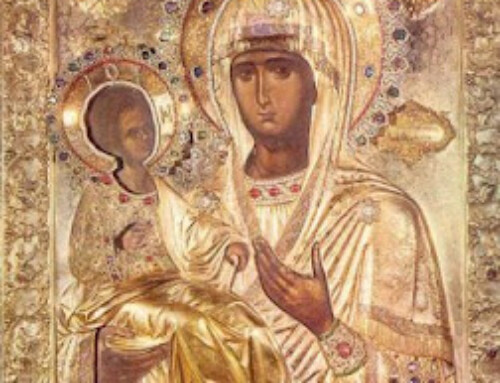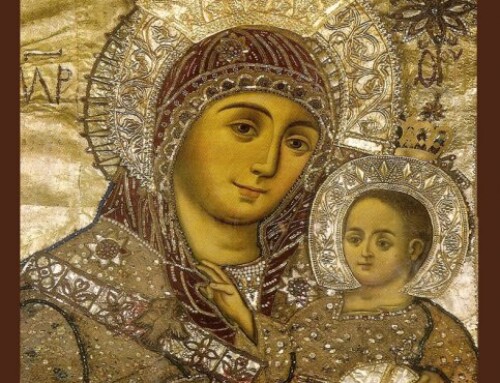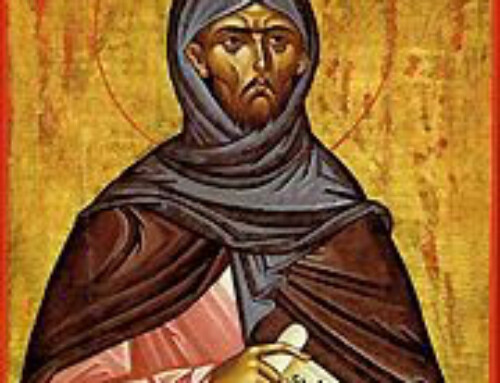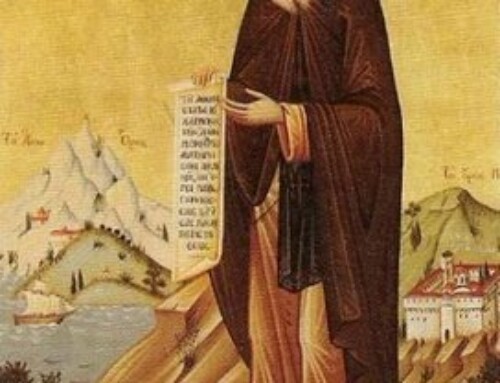Word Magazine January 1967 Page 19-20
SAINT BASIL THE GREAT
By Adma Shakhashiri
Basil the Great was born in Caesarea of Cappadocia in eastern Asia Minor towards the end of the year 329. He was born into a wealthy and distinguished Christian family. His father, who was also called Basil, was a well-educated man, a lawyer in profession and a very skillful speaker, who later was venerated as a Saint. His mother Emmelia was the daughter of a sincere Christian who suffered martyrdom for the Church. Emmelia was a dedicated mother and a wonderful woman, gracious both in mind and body. Basil’s grandmother, who was later known as St. Macrina the Elder, was a very pious Christian woman who loved God and suffered considerably during the persecutions.
Basil was the eldest son born to Basil the Elder and Emmelia, just one year after his sister Macrina. Since his early childhood he was delicate in body and throughout his life suffered from ill-health. Most of his earliest years were spent at his family’s country house near Niksar in Pontus, along the southeast coast of the Black Sea.
In this remarkable family, Basil grew up with his seven sisters and brothers, well cared for in the best Christian environment. The children were brought up by their mother and grandmother in a blessed family atmosphere of love and dedication to God. On many cold winter evenings the children gathered around their grandmother, Macrina the Elder, in front of the open fireplace to listen attentively to the stories of the many martyrs of the Church. She and their mother told them repeatedly the moving story of their grandfather’s sacrifice, as well as of the rest of their relatives and kinsmen who sacrificed their lives for Christ’s sake. In fact, this blessed family is known in Church history as the family of the Saints. Four of the children became outstanding Church heroes: St. Macrina the Younger, St. Basil the Great, St. Gregory the Bishop of Nyssa, and St. Peter the Bishop of Sebastea.
The beautiful family tradition of martyrdom was a precious treasure in St. Basil’s heart and soul. His early constant exposure to the two pious women, his mother and grandmother, left deep traces on his character and had a great deal of influence on his life. He said later, “I shall never forget the impressions that the words and example of these venerable women made on me when I was a boy.”
His father gave him at home the basic education of reading, writing and logic. When he was about sixteen years old, he was sent to study at the public schools, which were like universities, in Caesarea, Constantinople, and Athens. All through his years of learning, Basil showed an exemplary love of study and intelligence. It was at Athens where he met another Christian compatriot, Gregory of Nazianzus, a young man of humility and good character, who was just a few years older. This Gregory of Nazianzus, later known as St. Gregory the Theologian, became a long life friend of St. Basil. The two students were brought close together on account of their deep faith and the common memories of sufferings from their country. They met with many students who worshipped the idols and with the young prince, Julian the Apostate, who later became Emperor of Rome and used his power against the Christians. Strong and firm bonds of friendship were created in the hearts of Basil and Gregory: “We were of the same mind … each meant every thing to the other. We lived under the same roof, ate the same food, and were united. We had the same ideals, we worked with zeal, without envy towards the same goal, and our common desire was to become great orators.”
Their studies included logic, philosophy, poetry, history, geometry and mathematics, astronomy, and medicine. At the age of twenty-five, Basil left Athens to become a teacher of rhetoric — the art of languages and public speaking in Caesarea. He was fully equipped with the necessary learning and education, as was testified by his friend Gregory, and was already well-known for the steadiness of his character and the brilliance of his mind. His sister, St. Macrina who dedicated herself to maidenhood, was watching his growing popularity and success and prayed that he become a monk. In 357 he resolved to become a monk, having been baptized by his old friend Dianeios, Bishop of Caesarea. St. Basil then wrote: “I was like one awakened from deep sleep. I saw the wondrous light of Christian virtue: I realized the futility and emptiness of the wisdom of the great ones of this world, which passes and perishes … I read the Gospel and learned there that the high road to perfection is to sell all that one has and share it with the poor, to give up worrying about earthly things, and to refuse to allow the soul to be distracted by love of them.”
As a monk, St. Basil spent some time after his baptism traveling in Egypt, Palestine, Syria, and Mesopotamia, and visiting centers of Christian hermits, “monks living in deserts.” His widowed mother Emmelia and his sister Macrina with some friends had already retired to live a communal life at a beautiful place called Annesi on the river Iris. He took up his abode in a beautiful quiet place on the opposite bank of the river and invited his long time friend Gregory of Nazianzus to join him there, where they spent much time in meditation. Basil’s first disciple was his younger brother Peter. Soon his followers had grown into a large community which Basil organized as the first monastery in Asia Minor.
“St. Basil established a common roof, a common table and common prayer always. He asserted the principle that monks should endeavor to do good to their fellow men; and in order to bring works of charity within reach of his monks, orphanages were established separate from the monasteries but close at hand and under the care of the monks … The monks’ time was divided between prayer, work and the reading of the Holy Scriptures. They rose for the common prayer at night and chanted the divine praises till dawn. Six times each day they assembled in the Church for prayer. Their work was field labour and farming. The monastic virtues of obedience to the superior, of personal poverty, of self-denial and the cultivation of the spiritual life, and of personal religion were insisted on.” All the Monks of the East, with small exceptions, look on Basil as their patriarch and father among the saints.
Five years later, Basil was persuaded to go to Caesarea to be ordained deacon and priest, but soon returned to Annesi.
When the Arian Valens became co-emperor, Basil went back to Caesarea, was made vicar general, and became the most powerful person in the diocese for the next five years. It was perhaps at this time that he worked on the services of the Church and produced his famous Liturgy of St. Basil.
During the famine of 367-78, Basil sold what was left of his extensive property for the benefit of the starving and the sick. He organized the work of relief and forbade any distinction between Christians and Jews. After the death of bishop Eusebius. Basil succeeded him as the bishop of Caesarea. With his authority and power as the bishop of Caesarea, he persuaded the wealthy to contribute their help and befriend the poor. He succeeded in founding a city of charitable institutes — poor houses, orphanages, hotels, leper-houses, and special schools where the poor and orphan children could learn a skill. As a tribute to this great friend of the needy, this charitable institution was later named “Basilias.”
Basil fought against all heresies, especially against the Arians whose threats he disregarded. When asked to choose between Orthodoxy and death by the Emperor’s first lieutenant, Basil answered: “Fire, death by the sword, and the beasts that tear our flesh with their long nails, give us joy rather than fear. You may insult, you may threaten, you may do what ever you please to enjoy your power, but let the Emperor know that even his worst threats will not persuade us to compromise with impiety!” This answer impressed the Emperor who decided not to disturb
him any more.
St. Basil was a man of many friends: “From youth to old age,” he himself wrote, “I have had many friends … I have never sinned against friendship.” St. Basil became very famous as a defender of Orthodoxy. He is recognized as one of the greatest figures in Church history, the perfect model of a bishop, as a doctor of the Church, and the father of countless monks. He wrote many worthy books that made him known as “the man who wrote letters,” and justified the title bestowed on him of “Torch-bearer of the universe.”
St. Basil died on January 1, 379, while his flock and multitudes of the Christian believers were praying for him in the streets. All Caesarea was present at his burial in “the tomb of his fathers”; Jews and heathens, as well as Christians.
St. Basil is one of the Three Cappadocian Fathers along with St. Gregory of Myssa, and Gregory of Nazianzus. He is also one of the Three Holy Hierarch, the others being St. John Chrysostom and St. Gregory Nazianzus. In the Council of Chalcedon he was referred to as “the great Basil, a minister of grace who expounded truth to the whole world.” The Liturgy that bears his name is still used in our Church ten times a year, especially on the Sundays of Lent, and in January, on the Anniversary of his death in 379.





